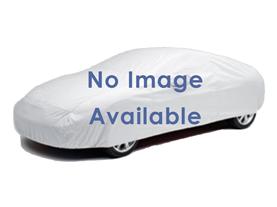CITROEN 2CV
The Citroën 2CV (French: ""deux chevaux"" i.e. ""deux chevaux-vapeur"" (lit. ""two steam horses"", ""two tax horsepower"") is an air-cooled front-engine, front-wheel-drive economy car introduced at the 1948 Paris Mondial de l'Automobile and manufactured by Citroën for model years 1948–1990.
Conceived by Citroën Vice-President Pierre Boulanger to help motorise the large number of farmers still using horses and carts in 1930s France, the 2CV has a combination of innovative engineering and utilitarian, straightforward metal bodywork — initially corrugated for added strength without added weight. The 2CV featured low cost; simplicity of overall maintenance; an easily serviced air-cooled engine (originally offering 9 hp); low fuel consumption; and an extremely long-travel suspension offering a soft ride and light off-road capability. Often called ""an umbrella on wheels"", the fixed-profile convertible bodywork featured a full-width, canvas, roll-back sunroof, which accommodated oversized loads and until 1955 reached almost to the car's rear bumper. Notably, Michelin introduced and first commercialized the radial tyre with the introduction of the 2CV.
Manufactured in France between 1948 and 1988 (and in Portugal from 1988 to 1990), more than 3.8 million 2CVs were produced, along with over 1.2 million small 2CV-based delivery vans known as fourgonnettes. Citroën ultimately offered several mechanically identical variants including the Ami (over 1.8 million); the Dyane (over 1.4 million); the Acadiane (over 250,000); and the Mehari (over 140,000). In total, Citroën manufactured almost 9 million 2CVs and variants.
The purchase price of the 2CV was low relative to its competition. In West Germany during the 1960s, for example, it cost about half as much as a Volkswagen Beetle. From the mid-1950s economy car competition had increased – internationally in the form of the 1957 Fiat 500 and 1955 Fiat 600, and 1959 Austin Mini. By 1952, Germany produced a price competitive car – the Messerschmitt KR175, followed in 1955 by the Isetta – these were microcars, not complete four-door cars like the 2CV. On the French home market, from 1961, the small Simca 1000 using licensed Fiat technology, and the larger Renault 4 hatchback had become available. The R4 was the biggest threat to the 2CV, eventually outselling it.
A 1953 technical review in Autocar described ""the extraordinary ingenuity of this design, which is undoubtedly the most original since the Model T Ford"". In 2011, The Globe and Mail called it a ""car like no other"". The motoring writer L. J. K. Setright described the 2CV as ""the most intelligent application of minimalism ever to succeed as a car"", and a car of ""remorseless rationality"".
From Wikipedia, the free encyclopedia
 F486WFA
F486WFA
 JAF431N
JAF431N
 D399SVS
D399SVS
